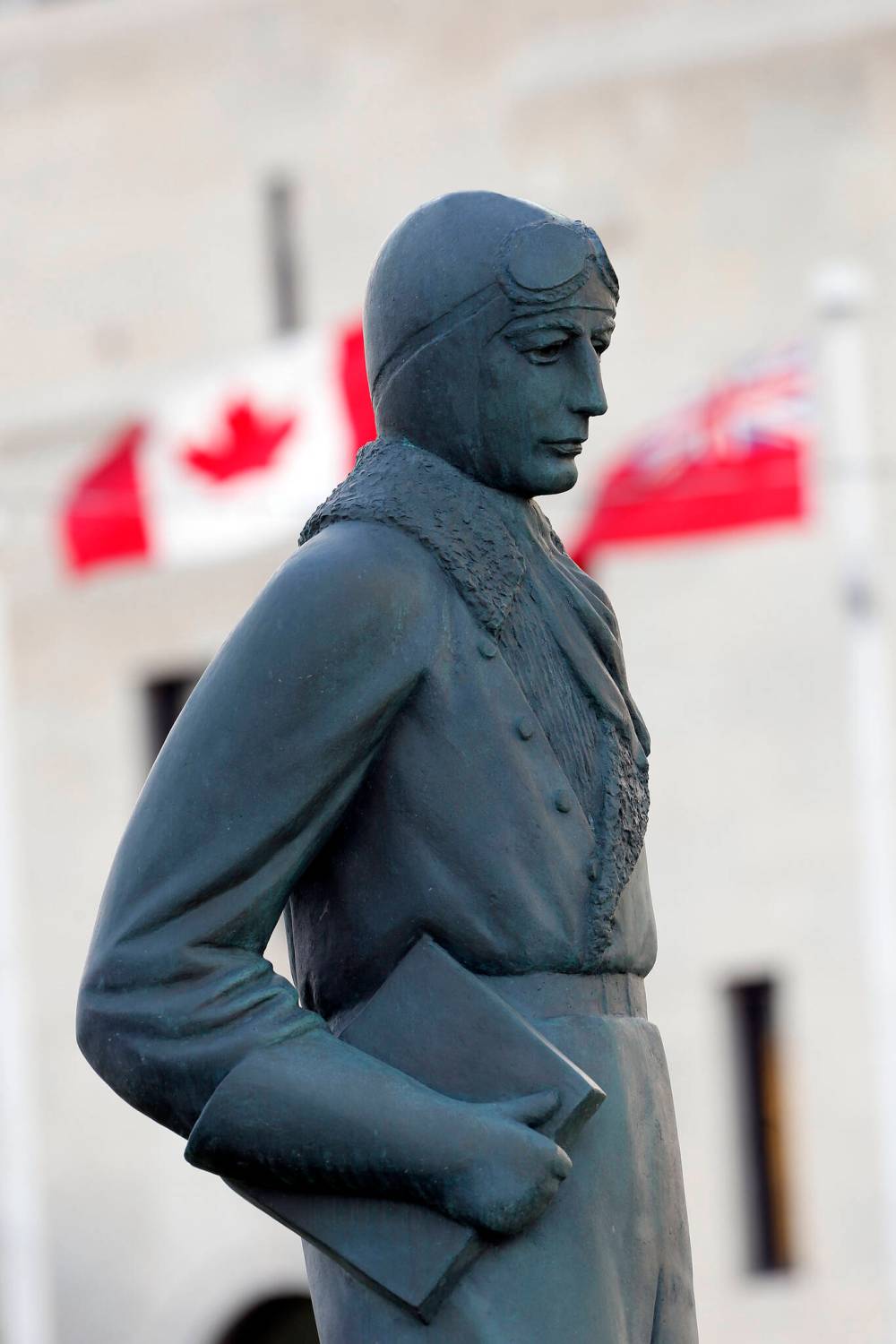Winnipeg man helps change the course of history
Advertisement
Hey there, time traveller!
This article was published 28/05/2025 (194 days ago), so information in it may no longer be current.
The movie A Man Called Intrepid was based on the biography of a man from Winnipeg. It’s also been said the James Bond movies are a romanticized version of this same man’s life. That man was William Stephenson. The influence Stephenson had and the connections he made to rise to the status of Sir William Stephenson are astounding.
At the finale of the Charleswood Historical Society’s heritage series, Alan Parkin, president of the Intrepid Society, provided a fascinating account of how this Winnipeg-born British spymaster inspired books and movies during the 20th century.
Stephenson was born in Winnipeg in 1897, lived in Point Douglas and went to Argyle School. He worked at various jobs — delivery man, in construction but his passion was boxing, and he became a champion boxer. In 1916, he joined the Winnipeg Light Infantry. He went to England, took courses in flying and became a fighter pilot, shooting down many enemy aircraft during the First World War. He received the Distinguished Flying Cross, Military Cross and the Inter Allied Military Medal.

File photo
The influence William Stephenson, born and raised in Winnipeg, had and the connections he made to rise to rank of Britain’s top spy-master during the Second World War were discussed recently during a Charleswood Historical Society heritage series event.
Following the war and back in Winnipeg, Stephenson started a hardware business and tried his hand at inventions (specifically, a can opener). That didn’t work out and he left Winnipeg in debt, but not defeated.
In 1921, Stephenson moved to London, where he became an entrepreneur and a successful businessman. He was involved in many ventures, including the invention of a wireless photo transmitter, pressed-steel manufacturing, a leading production studio, and building the largest stadium in England.
During that time, he travelled in Europe and became aware of the growing power and buildup of Nazis in Germany. That concern prompted him to connect with Prime Minister Winston Churchill. The subsequent meeting and bond with Churchill set the stage for what was to become his life as a spymaster. He became known as “Churchill’s man.”
Although Stephenson had no training as a spy, he was put in charge of British Security Operation in New York in 1940. That post made Stephenson Britain’s top intelligence officer in the United States. As security co-ordinator, he headed covert operations, including setting up satellite establishments and decoding information. He was also indirectly involved in the Manhattan project (the development of the atomic bomb). The spy network he created stalled the Nazi war machine and helped the Allies win the Second World War.
After the war, Stephenson remained committed to the cause of freedom, and was the recipient of medals including the Order of Canada (companion) and Manitoba’s Order of Buffalo Hunt. He was also presented with honorary doctorates by both the University of Winnipeg and the University of Manitoba. In 1984, he established the Sir William Stephenson endowment at the U of W, which provides scholarships to two students. Stephenson retired in Bermuda, where he lived until he was 96 years of age.
He has been memorialized in a Winnipeg library, with a Leo Mol statue on Memorial Boulevard, a bust in Assiniboine Park, and Water Street was renamed Sir William Stephenson Way. To find out more about his legacy, check out intrepid-society.org, read A Man Called Intrepid, by William Stevenson; The Quiet Canadian, by Harford Montgomery Hyde; or Bill Macdonald’s book, The True ‘Intrepid’: Sir William Stephenson and the Unknown Agents.

Donna Minkus
Charleswood community correspondent
Donna Minkus is a community correspondent for Charleswood.
Our newsroom depends on a growing audience of readers to power our journalism. If you are not a paid reader, please consider becoming a subscriber.
Our newsroom depends on its audience of readers to power our journalism. Thank you for your support.
History
Updated on Wednesday, June 4, 2025 12:00 AM CDT: Corrects errors, typos




